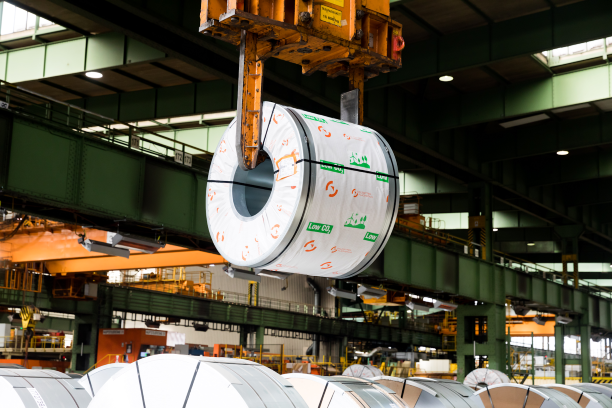Salzgitter AG delivers green strip steel to Mercedes-Benz AG
by David Fleschen

Before the end of 2021, Salzgitter AG subsidiary Salzgitter Flachstahl GmbH will be delivering green strip steel products with a CO2 footprint reduced by more than 66% to four German plants of Mercedes-Benz AG.
The low CO2 steel grades are produced in Peine’s mini mill in combination with the steelworks galvanizing plant in Salzgitter. These steel grades have met with strong interest from customers operating in range of different sectors.
Mercedes-Benz AG is the first automotive manufacturer that Salzgitter Flachstahl GmbH is supplying with CO2-reduced steel in the form of cold-rolled strip and galvanized sheet steel for serial production. The products will be used, among other things, for structural and body parts for various car models.
Many of our customers consider it important to take delivery of a real, physical reduced-CO2 product now rather than being satisfied with more or less theoretical CO2 footprint projections. Gunnar Groebler, Chief Executive Officer of Salzgitter AG: “Expanding our product portfolio to include green strip steel from the new low CO2 production route is a key component of our decarbonization strategy that we are already in the process of implementing today. Furthermore, we will be rigorously pursuing the path toward low CO2 steel production through SALCOS – SAlzgitter Low CO2-Steelmaking. This fundamental transformation will enable us to completely replace conventional steel production in a series of defined steps through hydrogen-based processes. This will enable us to achieve our mission of reducing CO2 by around 95%, thus avoiding 1% of Germany’s current emissions.”
As the first steel producer in Europe, Salzgitter AG has obtained conformity statements for its new green steel products in accordance with the VERIsteel standard of TÜV SÜD (German technical inspectorate). The process provides proof of product-specific CO2 emissions in steel production and flanks the process of decarbonization. The conformity statements confirm that switching the steel production process from the conventional blast furnace route to the electro-steel route achieves CO2 savings of between 66% and 75% depending on the final product delivered.
Source and Photo: Salzgitter

